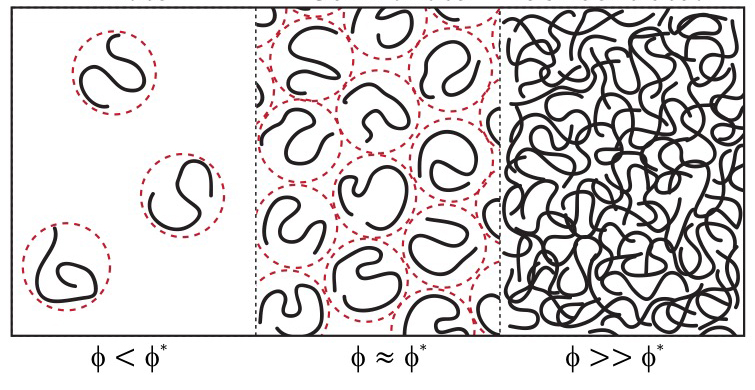Inside each and every living cell, there are miniscule structures called membraneless organelles. These tiny powerhouses use chemistry to cue the inner workings of a cell — movement, division and even self-destruction.
A collaboration between engineers at Princeton University and Washington University in St. Louis has developed a new way to observe the inner workings and material structure of these vitally important organelles. The research, published today in Nature Chemistry, could lead to a host of new scientific applications, as well as a better understanding of diseases such as cancer, Huntington’s and amyotrophic lateral sclerosis, or ALS.

“They’re like little drops of water: They flow, they have all the properties of a liquid, similar to raindrops,” said Rohit Pappu, the Edwin H. Murty Professor of Engineering at Washington University’s School of Engineering & Applied Science. “However, these droplets are comprised of protein that come together with RNA (ribonucleic) molecules.”
In the past, peering into organelles has proven difficult due to their tiny size. Clifford Brangwynne, associate professor in chemical and biological engineering at Princeton’s School of Engineering and Applied Science, and his collaborators developed a new technique — called ultrafast scanning fluorescence correlation spectroscopy, or usFCS — to get an up-close assessment of the concentrations within and probe the porosity of facsimiles of membraneless organelles. The approach uses sound waves to control a microscope’s ability to move and then obtain calibration-free measurements of concentrations inside membraneless organelles.
In their research, Brangwynne and his team, including postdoctoral researchers Ming-Tzo Wei and Shana Elbaum-Garfinkle, used cells taken from a roundworm. With usFCS, they were able to measure protein concentrations inside organelles formed by the specific protein LAF-1. This protein is responsible for producing p-granules, which are protein assemblies responsible for polarizing a cell prior to division. Once the Princeton researchers were able to clearly peek into the organelles and view the LAF-1, what they found surprised them.
“We found that instead of being densely packed droplets, these are very low density, permeable structures,” Brangwynne said. “It was not the expected result.”
That’s when Washington University’s Pappu and his graduate research assistant Alex Holehouse tried to make sense of the surprising findings from the Princeton group. Pappu’s lab specializes in polymer physics and modeling of membraneless organelles.
“We were able to basically swim inside the organelles to determine how much room is actually available. While we expected to see a crowded swimming pool, we found one with plenty of room, and water. We’re starting to realize that these droplets are not all going to be the same,” Pappu said.

In the case of the LAF-1 organelles, the researchers found the formation of ultra-dilute droplets derives from information encoded in the intrinsically disordered regions of these protein sequences. The features of that sequence ensure that this protein is a highly floppy molecule, rather like cooked spaghetti, lacking the ability to fold into a specific, well-defined structure. In contrast, in other organelles formed by different proteins, the material properties are more like those of toothpaste or ketchup. Brangwynne and Pappu are continuing to collaborate to figure out how different protein sequences encode the ability to form droplets with very different material properties. This work has direct implications for understanding biological functions of membraneless organelles and for understanding how changes to these material properties give rise to diseases such as neurodegeneration or cancers.
“There is an explosion of engineering applications and transformations for mechanistic cell biology that are on the horizon. These advancements will be accessible as we learn more about the foundation of these organelles and how their amino acid sequence determines material properties and function,” Pappu said. “These organelles are doing remarkable things inside cells, and a really neat question is: How can we mimic them?”
Pappu said that one day, researchers could hack the design principles of organelles to fashion everything from intracellular chemistry labs to tiny drug-delivery vehicles and imaging agents. Aside from the practical applications, there also are potential implications for understanding and diagnosing a whole host of diseases.
“It is essential to be able to understand how one can regulate the functions of these droplets,” Pappu said. “If we succeed, the impact could be transformative: It’s not just cancer, it’s neurodegeneration, about developmental disorders, and even the fundamentals of cell biology.”
Ming-Tzo Wei#, Shana Elbaum-Garfinkle#, Alex S. Holehouse#, Carlos Chih-Hsiung Chen, Marina Feric, Craig B. Arnold, Rodney D. Priestley, Rohit V. Pappu* and Clifford P. Brangwynne* “Phase behavior of disordered proteins underlying low density and high permeability of liquid organelles.” (#co-first authors; *Corresponding authors) Nature Chemistry. June 26, 2017 DOI: 10.1038/NCCHEM.2803
Funding for this research was provided by the National Science Foundation (DMR 1420541) and the Eric and Wendy Schmidt Transformative Technology Fund. The work was also supported by a National Institutes of Health New Innovator Award (1DP2GM105437-01), an NSF CAREER Award (125035), NIH grants (1K99NS096217-01; 5RO1NS056114), and an HFSP Program grant (RGP0007/2012).
The School of Engineering & Applied Science at Washington University in St. Louis focuses intellectual efforts through a new convergence paradigm and builds on strengths, particularly as applied to medicine and health, energy and environment, entrepreneurship and security. With 88 tenured/tenure-track and 28 additional full-time faculty, 1,200 undergraduate students, 1,200 graduate students and 20,000 alumni, we are working to leverage our partnerships with academic and industry partners — across disciplines and across the world — to contribute to solving the greatest global challenges of the 21st century.
